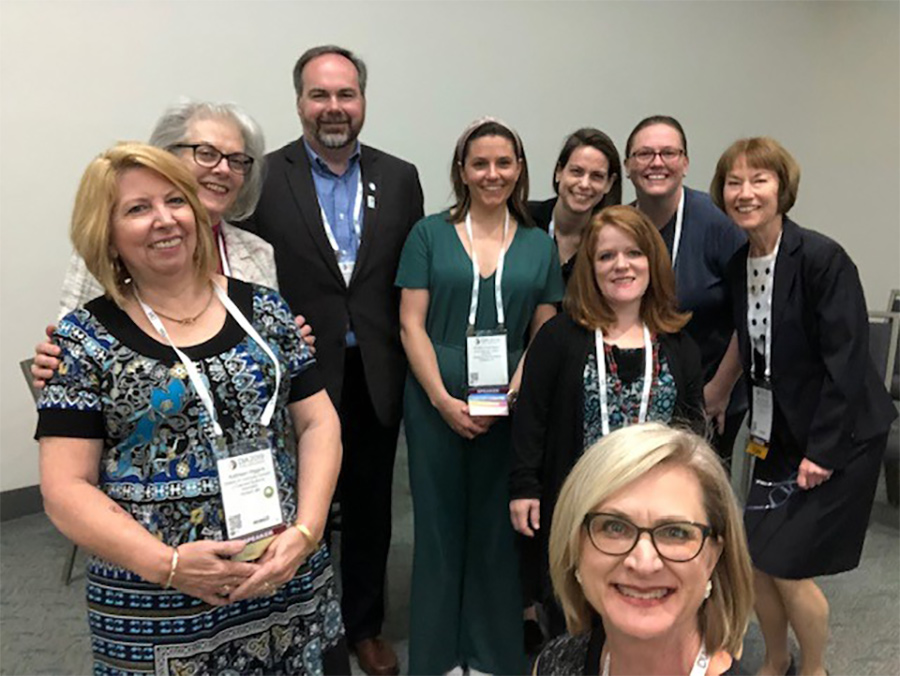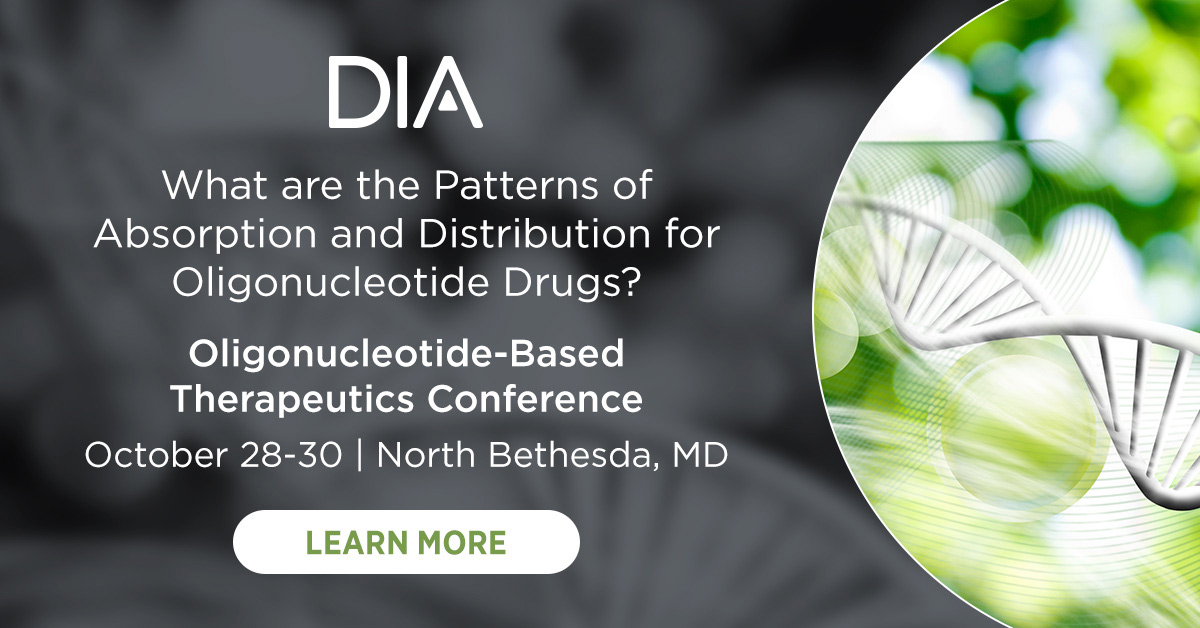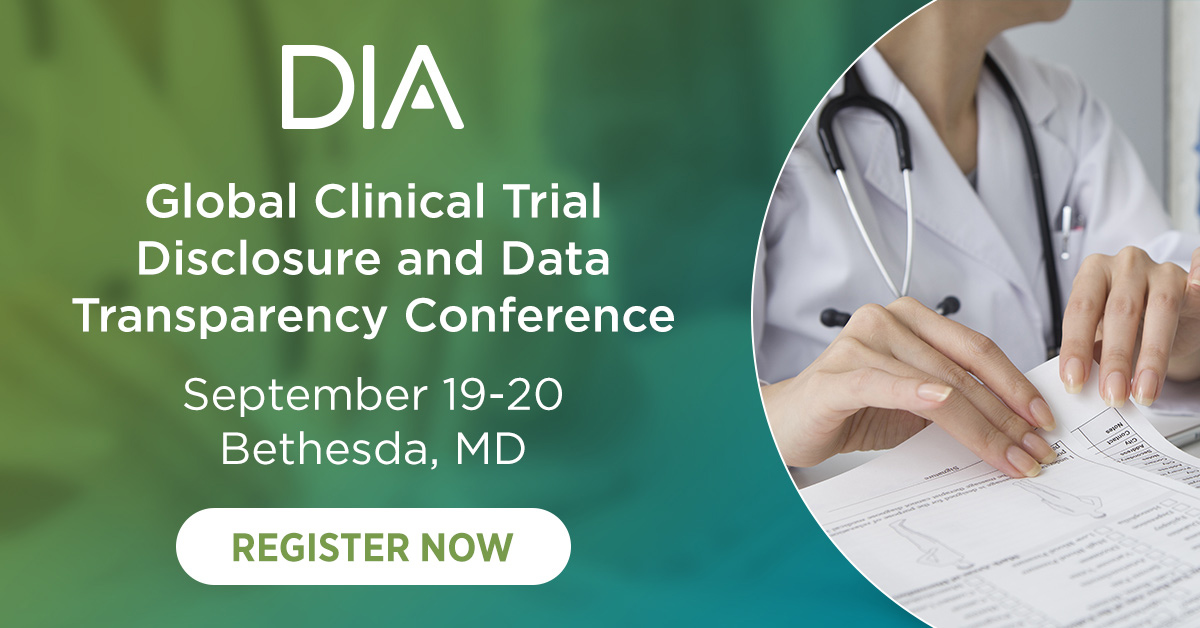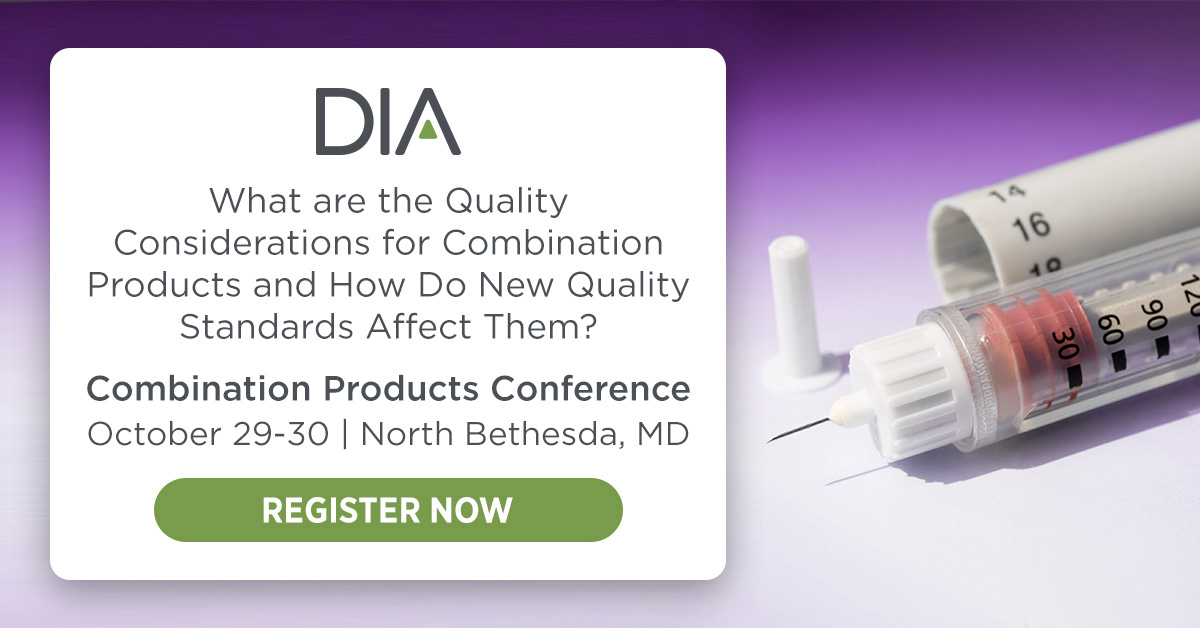August 2019 Global Forum
Table of Contents
DIA 2019 GLOBAL ANNUAL MEETING
DIA 2019 GLOBAL ANNUAL MEETING CONTINUED
Around The Globe
EXECUTIVE LEADERSHIP
Subscribe
Love Global Forum‘s new online format? Subscribe today and never miss an issue.
Executive Leadership

Alberto Grignolo, PhD
Editor-in-Chief
Global Forum
Fellow of DIA
uring the opening DIAmond session at the DIA Global Annual Meeting in San Diego, Dr. Harlan Krumholz (Yale University) urged drug developers to radically change their perspective of patients who participate in clinical trials:
Editorial Board
Content stream editors
Gary Kelloff US National Institutes of Health
David Parkinson ESSA Pharma, Inc.
regulatory science
Yoshiaki Uyama Pharmaceuticals and Medical Devices Agency (PMDA)
Adora Ndu BioMarin Pharmaceutical, Inc.
Patient engagement
Deborah Collyar Patient Advocates In Research (PAIR)
Lode Dewulf Servier
VALUE AND ACCESS
Marianne Hamilton Lopez Duke Margolis Center for Health Policy
Editorial Staff
Alberto Grignolo, Editor-in-Chief Parexel International
Ranjini Prithviraj, Global Associate Director, Content Collaboration DIA Publications
Sandra Blumenrath, Science Writer DIA Publications
Chris M. Slawecki, Senior Digital Copyeditor DIA Publications
Regional Editors
AFRICA
David Mukanga Bill and Melinda Gates Foundation
ASEAN
Silke Vogel Duke-National University of Singapore Medical School
AUSTRALIA/NEW ZEALAND
Richard Day University of New South Wales, Medicine, St. Vincent’s Hospital
CANADA
Judith Glennie JL Glennie Consulting, Inc.
Megan Bettle Health Canada
CHINA
Ling Su Shenyang Pharmaceutical University, Lilly Asia Ventures
Europe
Thomas Kühler Sanofi R&D
INDIA
J. Vijay Venkatraman Oviya MedSafe
JAPAN
Kazuhiro Kanmuri Inter-Professional, Inc.
MIDDLE EAST
Inas Chehimi Novartis
USA
Ebony Dashiell-Aje FDA
Young Professionals Editor
DIA Membership
Bringing together stakeholders for the betterment of global health care.
Proceedings: DIA 2019 Global Annual Meeting
Proceedings: DIA 2019 Global Annual Meeting

Keynote Address
DIA
n today’s dynamic science and healthcare world, DIA 2019 provided an overarching reminder that patients are at the center of everything we do. In the keynote address given by Gary Gibbons, Director of of the National Heart, Lung, and Blood Institute (NHLBI), he stressed the importance of patients in the ecosystem of biomedical research. Over the course of an engaging 45-minute talk, Gibbons wove in his own history to drive home NHLBI’s mission of using translational and discovery science to enhance human health, and how the advancements of science have a significant public health impact.
Key Takeaways
- Collaboration drives innovation between basic science, industry, and implementation science, and encompasses the value of public-private partnerships.
- The social determinants of health and health inequities impact biopharmaceutical science and industry, and a systems approach to thinking about issues is key.
- Here’s a challenge: How do we drive innovation and scale our science to have a true global impact in reducing the burden of diseases?
Proceedings: DIA 2019 Global Annual Meeting

From Innovation to Operationalization
Debra Michaels
DIA
lthough only few people in the research and development enterprise have had the opportunity to work with a master protocol trial, it is difficult not to be aware of the excitement surrounding these innovative trials. “Innovative” in this case does not mean new: the I-SPY 2 trial was launched in 2010 as an evolution of the I-SPY1 trial that began in 2006. The LUNG-MAP trial of the National Cancer Institute was launched in 2014, and the EPAD (European Prevention of Alzheimer’s Dementia) study in 2016. Since then, new master protocol trials either have been launched (the MyDRUG trial of the Multiple Myeloma Research Foundation in 2018, and the GBM AGILE trial of the Global Coalition for Adaptive Research in June, 2019) or are in active start-up mode (such as the Precision Promise of the Pancreatic Cancer Action Network, set to launch in 2019).
Key Takeaways
- Master protocol trials, whether basket, umbrella, or platform trials, are collaborative endeavors with the ultimate goal of speeding the discovery and development of cures for patients with deadly diseases. Additionally, all collaborating stakeholders realize benefits from master protocol trials.
- The design, start-up, and operational aspects of master protocol trials can be complex, but these trials face the same challenges as traditional clinical trials. With appropriate planning, challenges can be overcome, and unique benefits can be realized.
- Open communication about uncertainties around master protocols and traditional change management efforts have lessened hesitation about collaboration, especially cross-industry, and resistance to new approaches within organizations.
![]() Videos
Videos
Proceedings: DIA 2019 Global Annual Meeting

Kayla Valdes
DIA
recision medicine (PM) is founded on the principle that therapeutic intervention can no longer be a “one-size-fits-all” approach if it is going to be optimally effective for each patient. A myriad of genetic and environmental factors need to be taken into account in order to develop an appropriate and effective treatment plan for patients. Major drug classes are prescribed by trial-and-error; however, PM aims to develop targeted therapies specific to the individual patient to increase the likelihood of success. Additionally, PM has the potential to reduce adverse drug reactions and the use of invasive testing procedures, while improving patient adherence to treatment, thus decreasing the overall cost of healthcare.
Key Takeaways
- Through the development of molecular and genetic diagnostic tools, PM can use predictive biomarkers to better match patients with a targeted therapy.
- Precision medicine has flourished in cancer therapy, and new immuno-oncology treatments, such as checkpoint inhibitors or CAR-T cells, are the latest types of individualized therapies specifically designed to treat tumors based on genetics rather than tissue of origin.
- Innovative trial designs such as umbrella trials, basket trials, and master protocols are key to the progress of PM; however, these trials have a low adoption rate due to negative perceptions within pharma due to a lack of regulatory harmonization.
![]() Videos
Videos
Proceedings: DIA 2019 Global Annual Meeting

Nobumasa Nakashima
Pharmaceuticals and Medical Devices Agency (PMDA)
or the last 15 years, PMDA has taken several steps to deliver safer and more effective medicines and medical devices to patients. PMDA has drastically shortened its review times, which has resulted in a substantial decrease of the so-called “drug lag.” Recently, PMDA established the Asian Training Centre (ATC) for Pharmaceuticals and Medical Devices Regulatory Affairs and the Center for Regulatory Science.
In April 2019, PMDA welcomed its new chief executive, Yasuhiro Fujiwara, who has established four new priority areas (the “4 Firsts”). In addition, the Pharmaceuticals and Medical Devices (PMD) Act, the fundamental statute for pharmaceuticals and medical devices regulation in Japan, is under revision and deliberation in the Diet (the Japanese Parliament).
The PMDA Town Hall at the Global Annual Meeting provided regulatory updates as well as an overview of Fujiwara’s new priority areas and the revision of Japan’s Pharmaceutical and Medical Device (PMD) Act.
Key Takeaways
- Yasuhiro Fujiwara, the new Chief Executive of PMDA, established four new priority areas (the “4 Firsts”): 1. Patient First, 2. Access First, 3. Safety First, and 4. Asia First.
- The revision of the PMD Act is under discussion in the Diet and includes legislation for the “SAKIGAKE designation system” and the “Conditional early approval system.”
- ATC has provided a series of training seminars to foreign regulators to build mutual confidence among regulators and learn ICH and IMDRF guidelines. In fiscal year 2018, ATC hosted ten training seminars for 267 regulators from 31 countries or regions.
- PMDA has also established the Center for Regulatory Science aimed at strengthening reviews and consultations as well as safety measures by promoting regulatory science and human resource development.
![]() Videos
Videos
Proceedings: DIA 2019 Global Annual Meeting

Clinical Trial Diversity:
Moving from Admiring the Problem to Solving It
Richardae (Chardae) Araojo
Office of Minority Health and Health Equity, FDA
Fabian Sandoval
Emerson Clinical Research Institute
Jane Myles
Madeline Geday
Merck and Co, Inc.
Mindy Leffler
Casimir
he under-representation of racial and ethnic minority populations in clinical trials remains a long-standing problem. Following the FDA Safety and Innovation Act of 2012, FDA, industry, and others have continued to work to advance diverse inclusion in clinical trials. The DIA Forum on Clinical Trial Diversity: Moving from Admiring the Problem to Solving It convened a multi-stakeholder panel to describe a range of perspectives on practical solutions and strategies for strengthening diversity in clinical trials. The forum included a poll of attendees that revealed views on barriers to diverse enrollment and how best to overcome those barriers.
Key Takeaways
- The FDA’s Office of Minority Health and Health Equity works to raise awareness and advance racial and ethnic minority participation in clinical trials through development of a variety of culturally and linguistically competent strategies and resources.
- Merck is working to close the diversity gap through various tactics and tools that together have helped to advance enrollment and achieve successful inclusive clinical trials.
- Sites are critically important to ensuring diverse enrollment in clinical trials and should develop strategies on how best to reach their community and the populations they are seeking to enroll.
- Many of the barriers to participation can be anticipated and mitigated with an empathetic and substantive listening to patients.
Proceedings: DIA 2019 Global Annual Meeting

Emerging Technologies and Applications
DIA
f the steady decline in new first-in-class drugs coming to market is any indication, the current system of drug discovery is inefficient and insufficient to meet modern challenges. Automating the many decision-making processes currently carried out by researchers is hailed as the linchpin of the discovery and development of novel therapeutics, especially for difficult-to-treat conditions. In addition to data mining, another hope for AI in pre-clinical drug development is to capture patterns that are difficult to identify, simulate quantum states, or even suggest the structure of a new therapeutic molecule.
Key Takeaways
- Quantum computing tools have the potential of addressing highly complex computational modeling problems that are otherwise intractable with classical computing methods. Examples include problems in quantum chemistry that are applicable to pharmaceutical use cases, such as the accurate simulation of atoms and molecules, combinatorial optimization of, e.g., molecular structures and interactions, and machine learning.
- Metabolomics, which captures the metabolites that result from molecules processed through a metabolic pathway, is an emerging field that—together with AI-based data processing and analysis—can be used as a highly efficient drug discovery tool. In 2018, an estimated 20 different metabolites were discovered that could be used as drugs to treat diseases.
- One of the most powerful use cases for AI on the clinical trial side of drug development is the identification of digital biomarkers to power new and less fragile endpoints. Protocol development (design, optimization, and automation) also lends itself well to AI-based support. The Common Protocol Template has been a critical enabler for efficient, automated protocol development using AI.
![]() Videos
Videos
Proceedings: DIA 2019 Global Annual Meeting

Patient Advocates In Research (PAIR)
The Kith Collective, LLC
Tuberous Sclerosis Alliance (TSA)
Ultragenyx Pharmaceutical, Inc.
s members of the Annual Meeting Planning Committee, we thank all speakers and audience members for the great ideas and questions generated throughout the Patient Engagement (PE) Track at the DIA 2019 Global Annual Meeting. Sessions included ways to integrate PE into drug and device development, spanning all stages from planning and clinical trial protocols to regulatory considerations, and into post-market models. The momentum on patient engagement is definitely building.
- identify themes and emerging trends when partnering with patients, and expand ways to incorporate patient insights into drug development;
- describe practical solutions to apply lessons from DIA 2019;
- identify opportunities to communicate and share findings across stakeholder groups, promote adoption of lessons, and continue to advance our shared understanding of existing and emerging patient engagement outcomes; and
- discuss implications for the future.

Proceedings: DIA 2019 Global Annual Meeting

DIA
he role of the patient in drug development has grown, and patient-centric initiatives can be seen across industry and regulatory bodies. Two sessions at DIA’s Global Annual Meeting centered on how patient engagement has transformed the biopharmaceutical industry, and how to measure the impact of patient engagement. The lessons learned from these two sessions show how crucial it is to incorporate patients at every stage of the drug development process while establishing the importance of assessing patient engagement to understand best practices.
Key Takeaways
- Building effective tools for measuring the impact of PE involves a framework focused on monitoring, evaluating, learning.
- Some tenets of patient engagement include involving patients at every stage, engaging and incorporating patient views in all stages of drug development, developing research methodology that incorporates the patient preference, and ensuring patient voice for determining research priorities.
- Engaging all critical stakeholders across the healthcare environment is critical to make effective patient engagement a reality.
Proceedings: DIA 2019 Global Annual Meeting
Proceedings: DIA 2019 Global Annual Meeting

Freda Cooner
Amgen
Joan Buenconsejo
AstraZeneca
he Community Roundtable Discussion Master Protocols: Application in Oncology was designed to discuss the applications of master protocols in oncology clinical development. Attendees shared their past experiences and opinions on this topic and discussed the benefits of master protocols as well as the difficulties that include both operational and analysis obstacles. The discussion extended to general master protocol development in different therapeutic areas. It is important to understand when and where master protocols could improve clinical development efficiency. The roundtable discussion concluded with the message that a lot of work remains to be done to fully utilize master protocols in oncology.
Key Takeaways
- Definition: a master protocol uses a single infrastructure and is intended to simultaneously evaluate multiple investigational drugs (umbrella trial), multiple diseases or disease subtypes (basket trial), or multiple investigational drugs in a perpetual manner (platform trial) within the same trial structure.
- Past experiences of master protocols are mostly in oncology.
- Master protocols are practiced in early phases with binary endpoints more often than late phases with time-to-response endpoints.
- Master protocols are complex in terms of planning, conducting, and monitoring. Especially when adaptive or seamless features are adopted.
- More education and familiarization of master protocols are encouraged across different functions.
- Landscape change is needed in almost all aspects; regulatory acceptance is needed.
Proceedings: DIA 2019 Global Annual Meeting

Elena Popa
DIA
n a rapidly changing environment, pharmacovigilance activities ensure that patient safety remain front and center, ensuring—among other things—that information for patients is always accurate. Because it plays a critical role in medicines development, the industry safety and quality departments are also increasingly monitored by Health Authorities through regular inspections. Key Performance Indicators (KPIs) and Quality Assurance checks are scrutinized by inspectors in order to ensure compliance with regulatory requirements.
Key Takeaways
- Joint Inspections are becoming more common, and there is a need to harmonize the inspection methodology for all authorities.
- Industry needs more support and guidance to comply with regulatory requirements. Close collaboration may allow for the development of common tools to help address these challenges effectively.
- Joint audits to assess the pharmacovigilance systems of common service providers could be planned and organized to save costs.
Around the Globe
ollaborative regional legislative and agency efforts continue to drive regulatory harmonization throughout Africa in the effort to increase the safety and speed of clinical trials and ultimately the registration of safe and efficacious new medicines on African markets and the reliable availability of these medicines to the patients who need them.
Rwanda Ratifies AMA Treaty
On June 12, Rwanda became the first country to ratify the treaty for the establishment of the African Medicines Agency (AMA). A number of countries are expected to follow shortly. After 15 countries ratify this treaty, AMA will become an institution of the Africa Union, and will begin to establish its offices.
Working with the African Union Commission, the African Union Development Agency (AUDA-NEPAD), and other partners, the Boston Consulting Group (BCG) is leading the process of developing the AMA strategy and business plan. BCG is now in the consultation process with countries, regional economic communities, and other stakeholders. It is expected that the strategy and business plan will be ready by the end of 2019.
Around the Globe
n recent years, FDA has undertaken multiple efforts to better incorporate the patient’s voice in drug development and evaluation through adoption of outcome assessments that measure what matters to patients. One component of these efforts is the Clinical Outcome Assessment (COA) Compendium; its pilot was launched in January 2016. The COA Compendium is designed as a living resource and communication tool to increase FDA transparency and foster patient-focused outcome assessment in drug development.
What is the COA Compendium?
The COA Compendium is a public resource that collates and summarizes, in a tabular format, COA information from approved drug labeling organized by therapeutic area. A COA is a measure used to assess how patients feel, function, or survive. COAs can be based on a report from a patient, a clinician, a non-clinician observer (e.g., caregiver), or can be performance-based (e.g., test of cognition or walking ability).
Around the Globe
n April 2019, Health Canada (HC) released its Quality of Evidence guidance intended to encourage pharmaceutical companies to bring forward drug submissions that incorporate evidence gathered from real life settings. This initiative is part of HC’s Regulatory Review of Drugs and Devices (R2D2) modernization process, which specifically flagged their intention to “make better use of real world evidence (RWE) to support regulatory decisions across a product’s lifecycle for both drugs and medical devices.”
This guidance is a concrete action by the federal regulator under its R2D2 process, as well as a commitment stemming from an October 2018 RWE workshop involving key partners (i.e., the Canadian Association for Population Therapeutics, the Institute for Health Economics, HC, and the Canadian Agency for Drugs and Technologies in Health). That workshop’s goal was to identify the value and application of RWE in supporting pharmaceutical regulatory and reimbursement decision-making, and the conditions upon which RWE will be considered of sufficient quality to inform decision-making.
The following provides an overview of the HC guidance, along with the FDA’s 2018 RWE standards and a case study showcasing the application of the FDA’s approach to Ibrance for advance breast cancer in men.
Around the Globe
Today’s Research is Tomorrow’s Practice
Sri Bala Medical Centre and Hospital
linical research in India has evolved significantly in the last two decades. In the early 1990s, clinical trials in India started with very few sites. The country not only had a treatment-naïve population, but its cohort of clinical investigators and clinical research coordinators was also naïve to global GCP and regulatory requirements.
In 2005, regulatory authorities in India allowed parallel phase clinical studies, which accelerated patient access to new chemical entities. Exponential growth in research followed; nearly 500 clinical trials were registered in the Clinical Trials Registry – India between 2005 and 2010. But that pace proved too hot for the clinical trial industry to handle, and from 2012-2013 a number of issues (ranging from ethical to regulatory oversight) brought the industry in India to a grinding halt.
But as the saying goes: Every crisis is an opportunity for improvement.











